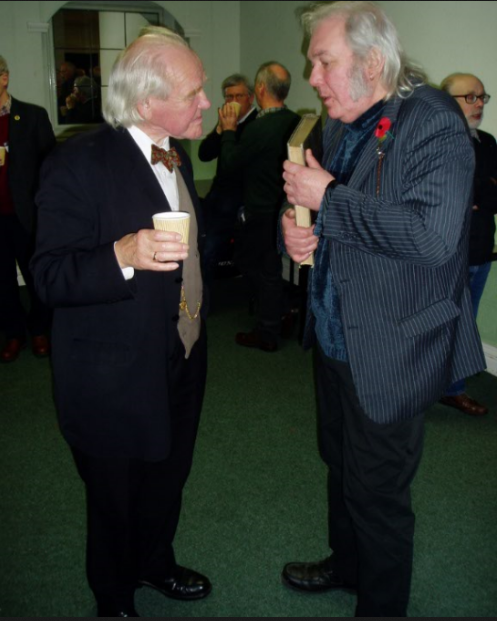2017 – Nineteenth Century Astronomy
Our speakers:
Mark Edwards – “Astronomy in the Paintings of JMW Turner:
Mark told us about his researches into the astronomical clues in the paintings of JMW Turner. Turner included astronomical objects such as the Moon, planets and stars in his paintings. If Turner painted what he saw, then we can date the paintings, sometimes to within minutes. Mark’s researches help us to pin down the details of Turner’s travels around Britain and Europe. One of his most famous paintings, The Fighting Temeraire, may borrow a sunset from a canvas started on an earlier date.
The life and work of the nineteenth century engineer and amateur astronomer, James Nasmyth, is reasonably well documented. He was born in Edinburgh, Scotland, moved, first to London in 1828, then to the developing industrial region in the north-west, where he lived for 20 years in the district of Patricroft, Eccles. Despite the wealth of information about his family and his engineering work, the location of his home, the house he called Fireside, was not precisely known. In his 1883 autobiography, edited by Samuel Smiles, he is vague about exactly where he lived. Kevin’s research resulted in Fireside and Nasmyth’s observing site, on the bank of the Bridgewater Canal, being identified with certainty. In 1849 Nasmyth outlined plans for a 60-inch telescope which, if it had been constructed, would have ranked second only to Lord Rosse’s 72-inch Leviathan of Parsonstown as the world’s s largest telescope.
Kenelm England – “Three Berkshire Astronomers”
As part of the Society for the History of Astronomy’s county-based survey of astronomical history, Kenelm England of Reading AS has studied three Berkshire astronomers:- Gideon Turner Davis, John Mackenzie Bacon and Thomas Hinsley Astbury. Turner was a talented sketcher whose notebooks are now in the possession of Reading AS. Bacon organized eclipse expeditions and took to the air to observe the 1899 Leonid meteor storm from a hot air balloon. Astbury was a village schoolmaster whose observations of variable stars were used by professional astronomers. All three were pioneer members of the BAA.

For centuries, the Royal Observatory was the residence of successive generations of Astronomers Royal, each of whom enjoyed life at Greenwich with their wives, children, pets and servants. These domestic stories are usually eclipsed by the formal work of the Observatory, but over the past year the ROG have refreshed the displays in Flamsteed House to show the family lives of Nevil Maskelyne (1732-1811) and George Biddell Airy (1801-1892). In her talk Louise took us on a virtual tour of the new displays to share a selection of the key stories, objects and archive material which have brought these fascinating and often poignant stories to life.
Our keynote speaker:
Dr Allan Chapman – “Sir John Herschel: Astronomer in Two Hemispheres”
We were delighted to have Dr Allan Chapman back as our keynote speaker. Allan talked at length about one of the nineteenth century’s most important figures, Sir John Herschel, son of William Herschel. Sir John, one of the founding members of the Royal Astronomical Society, spent several years surveying the southern skies from South Africa.
Bob Marriott concluded proceedings by showing us a copy of Sir John Herschel’s account of his observations from the Cape of Good Hope.
Thanks to all the speakers, and to members of the Society of the History of Astronomy, who opened up the Sir Robert Stawell Ball library in the BMI.
Click here to return to the Section home page.
https://britastro.org/wp-content/uploads/2018/02/bmi_speakers.JPG
https://britastro.org/wp-content/uploads/2018/02/bmi_speakers.JPG
https://britastro.org/wp-content/uploads/2018/02/sha_book_sale.JPG
| The British Astronomical Association supports amateur astronomers around the UK and the rest of the world. Find out more about the BAA or join us. |
